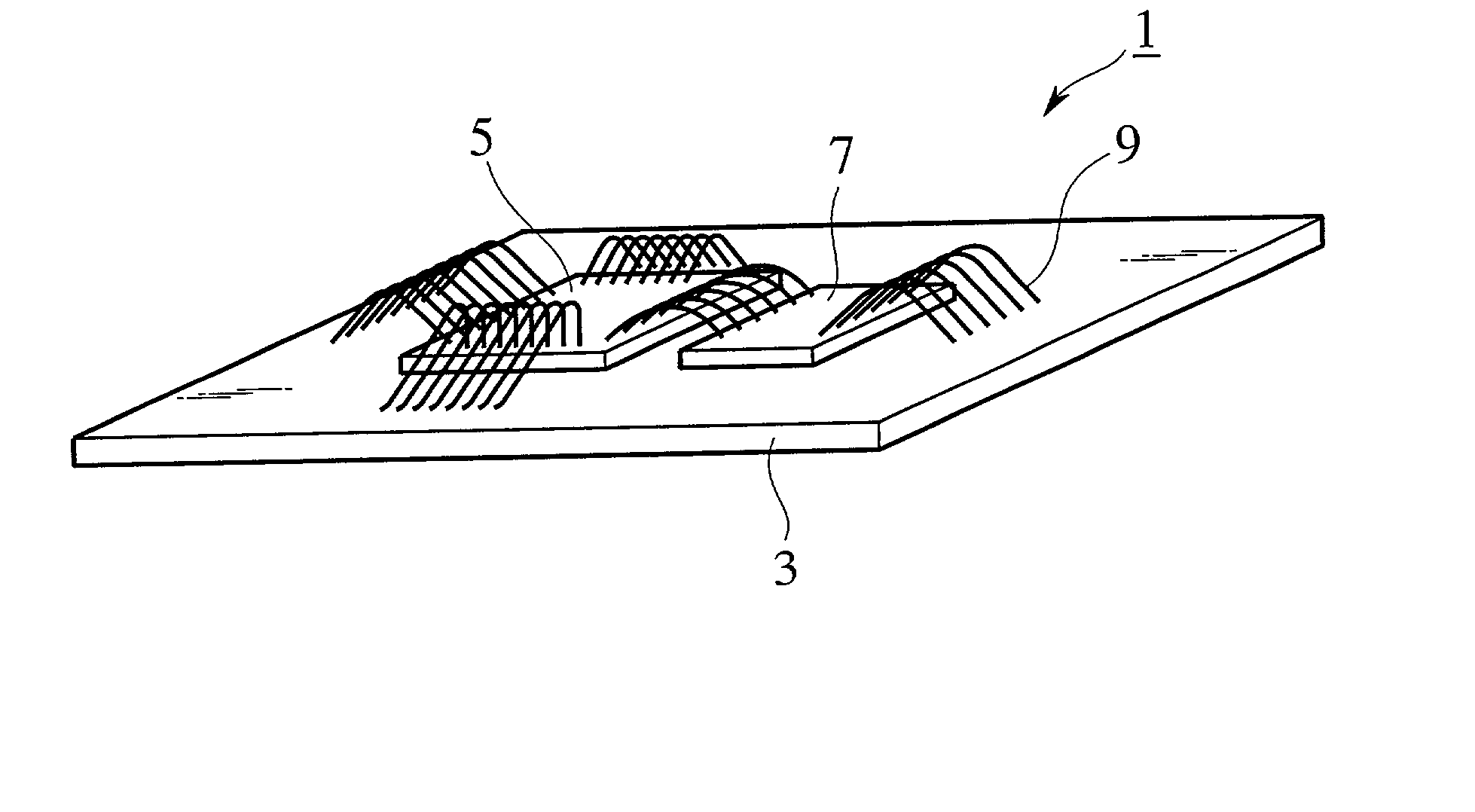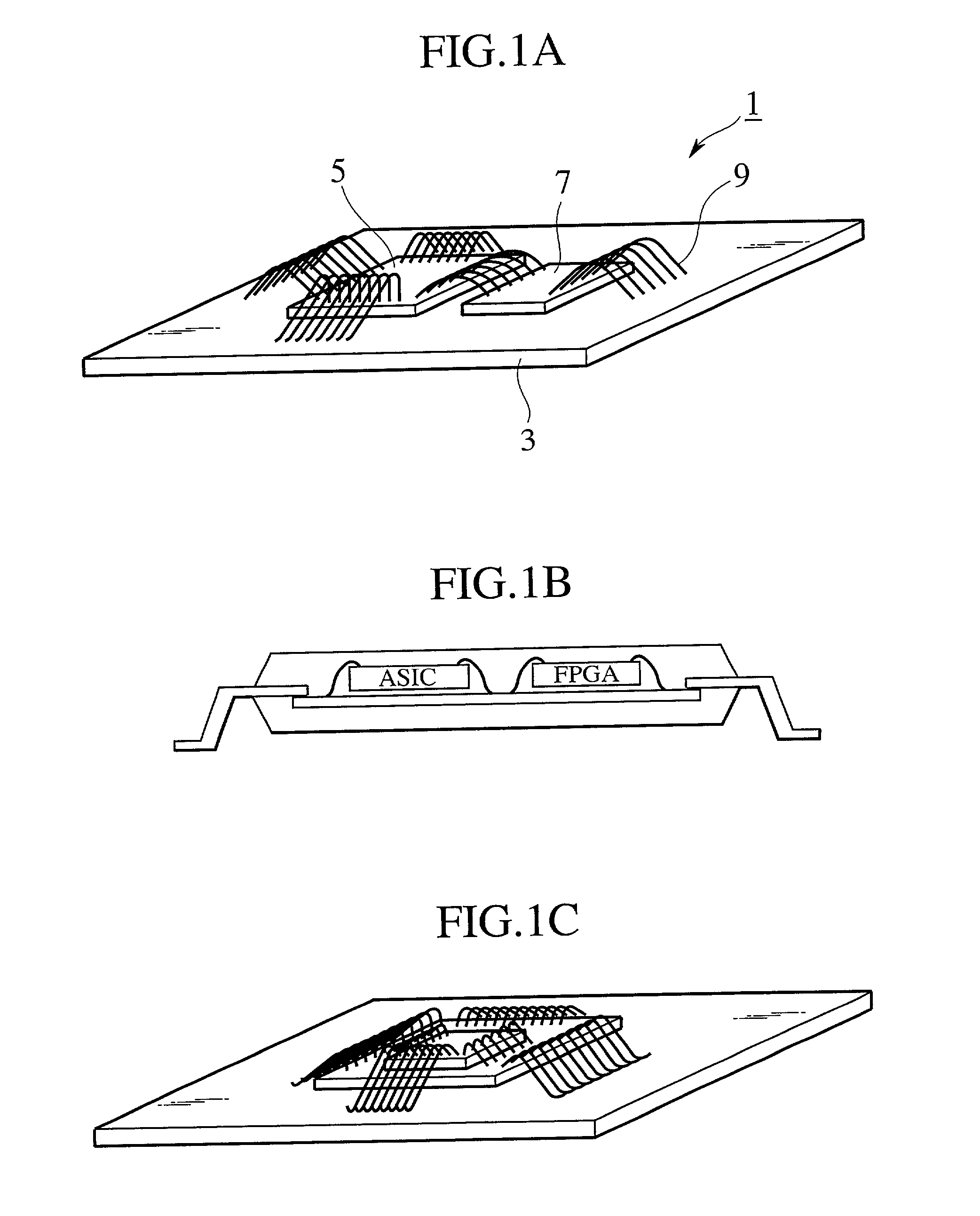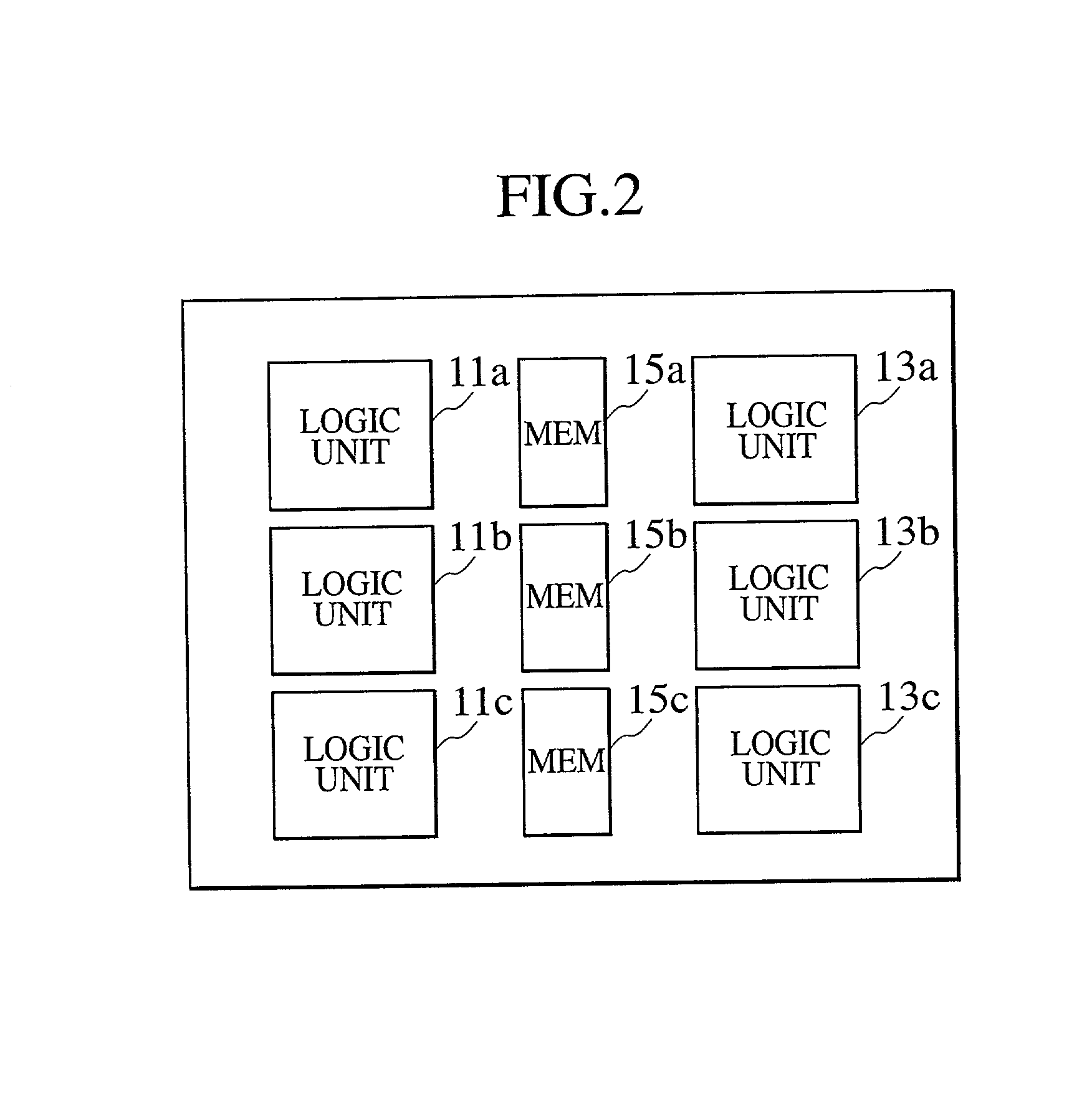Electronic circuit device and hybrid integrated circuit with an asic and an FPGA
- Summary
- Abstract
- Description
- Claims
- Application Information
AI Technical Summary
Problems solved by technology
Method used
Image
Examples
Embodiment Construction
[0025] Several embodiments of the present invention will be described with reference to the accompanying drawings.
[0026] FIG. 1A and FIG. 1B are a cross sectional view and a perspective view showing a hybrid integrated circuit in accordance with an embodiment of the present invention. In this case, the hybrid integrated circuit 1 is composed of a ceramic substrate or a printed circuit board 3 as a common substrate in which are formed electrode patterns such as electrode pads for bonding, wiring patterns and so forth, a monolithic semiconductor integrated circuit 5 of an ASIC mounted on the ceramic substrate 3, another monolithic semiconductor integrated circuit 7 of an FPGA also mounted on the ceramic substrate 3 and gold wires 9 with which the monolithic semiconductor integrated circuits 5 and 7 and the ceramic substrate 3 are interconnected. These monolithic semiconductor integrated circuits 5 and 7 have been diced as semiconductor chips from a semiconductor wafer.
[0027] The monol...
PUM
 Login to View More
Login to View More Abstract
Description
Claims
Application Information
 Login to View More
Login to View More - R&D
- Intellectual Property
- Life Sciences
- Materials
- Tech Scout
- Unparalleled Data Quality
- Higher Quality Content
- 60% Fewer Hallucinations
Browse by: Latest US Patents, China's latest patents, Technical Efficacy Thesaurus, Application Domain, Technology Topic, Popular Technical Reports.
© 2025 PatSnap. All rights reserved.Legal|Privacy policy|Modern Slavery Act Transparency Statement|Sitemap|About US| Contact US: help@patsnap.com



